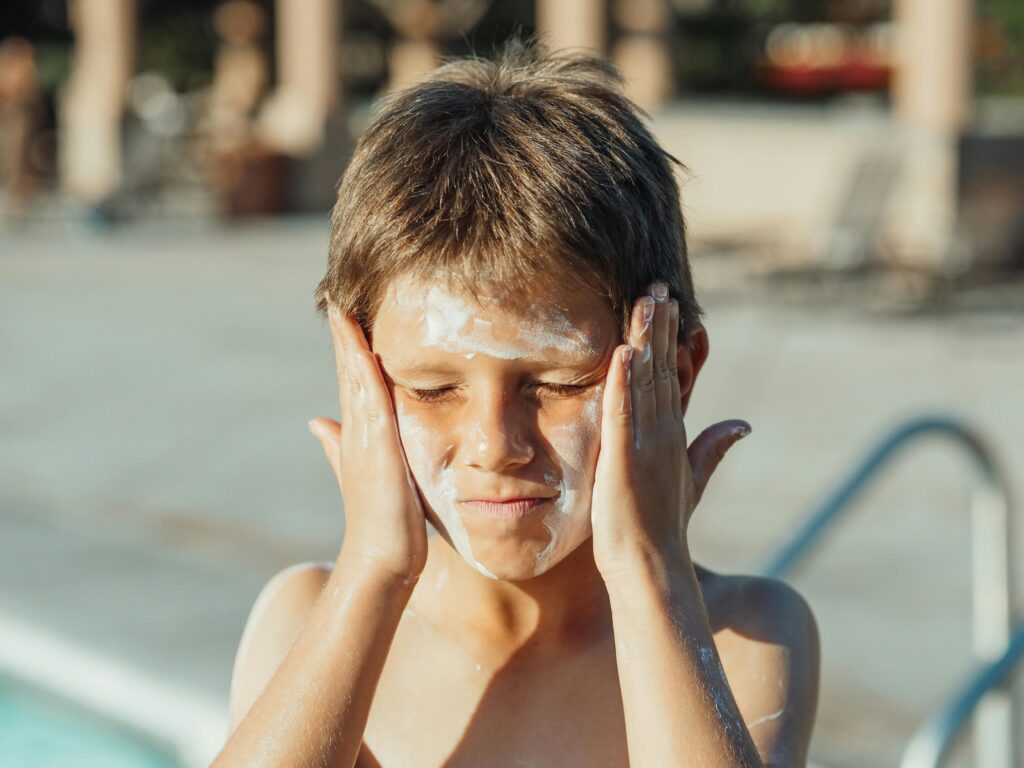Sunscreen After Moisturizer or Before? The Skincare Debate Ends Here
One of the most commonly asked skincare questions is: sunscreen after moisturizer or before? This simple yet crucial step can make a major difference in your skin’s health and the effectiveness of your skincare products. In this guide, we’ll break down the right order, explain the science, and provide a clear step-by-step routine to get the most out of your skincare regimen.
Why Skincare Order Matters
Understanding the correct sequence of skincare can boost product absorption, prevent breakouts, and ensure that your SPF actually works. The question of applying sunscreen after moisturizer or before isn’t just about convenience—it’s about protection and results.
What Comes First: Sunscreen or Moisturizer?
The Simple Answer:
Apply sunscreen after moisturizer.
This is the expert-approved order recommended by dermatologists worldwide. Moisturizer hydrates your skin and locks in active ingredients from serums. Applying sunscreen afterward forms a protective shield over your skin.
Types of Sunscreens and Why It Matters
Chemical Sunscreens:
These need to be absorbed into the skin to be effective. Apply them directly to clean skin or after lightweight serums—but before heavier creams if you’re layering. But most experts still agree that for daily skincare, it’s safer to apply sunscreen after moisturizer.
Mineral Sunscreens:
These create a physical barrier and should always be the last step of your skincare routine. So again, apply sunscreen after moisturizer.
Step-by-Step Routine
1. Cleanser
Start with a gentle cleanser suited for your skin type.
2. Toner (Optional)
Balances pH and preps skin for hydration.
3. Serum
Target skin concerns like acne, aging, or pigmentation.
4. Moisturizer
Hydrates and locks in all the previous layers.
5. Sunscreen
Apply a broad-spectrum SPF 30 or higher – yes, that means sunscreen after moisturizer.
🧪 The Science Behind Sunscreen After Moisturizer or Before
To truly understand whether we should apply sunscreen after moisturizer or before, we need to look at how these products interact with the skin on a scientific level.
🔬 Skin Absorption and Layering Logic
The general rule of skincare layering is to go from thinnest to thickest in terms of product consistency. Serums and treatments are typically lightweight, moisturizers are thicker and hydrating, while sunscreen—especially mineral ones—sits on top of the skin to create a physical or chemical barrier.
When people ask, “Should I apply sunscreen after moisturizer or before?”, the confusion comes from the function of the sunscreen. Sunscreens are designed to sit on the skin’s surface, not necessarily absorb like serums or moisturizers. If applied before moisturizer, they can be diluted or disrupted, making them less effective.
🧴 Sunscreen Forms a Final Shield
The skin’s barrier works best when sunscreen is the last step. Moisturizers condition the skin and ensure that sunscreen applies smoothly and evenly. Applying sunscreen after moisturizer also helps reduce pilling, which occurs when products aren’t layered correctly.
Even dermatologists emphasize that applying sunscreen after moisturizer or before should never be left to guesswork—science supports sunscreen as the final layer.
📈 Product Testing and Results
Clinical studies have shown that improper application order can reduce SPF effectiveness by up to 50%. That’s a huge margin, especially when protection against UV radiation is your goal. By following the correct order—sunscreen after moisturizer—you’re ensuring that the SPF stays intact and performs at its highest potential.

Common Mistakes to Avoid
- Skipping sunscreen indoors: Even indoor lighting and screens can emit harmful rays.
- Not reapplying SPF: Reapply every 2 hours when outdoors.
- Using makeup with SPF only: It’s not a replacement.
What If You Use a Moisturizer With SPF?
While it’s convenient, the SPF in moisturizers is usually not applied thick enough to offer full protection. Still follow the golden rule: apply sunscreen after moisturizer to ensure complete coverage.
FAQs About Sunscreen After Moisturizer or Before
❓ Can I skip moisturizer if my sunscreen is hydrating?
If your sunscreen contains moisturizing ingredients and you have oily or combination skin, it might be okay. But dry or sensitive skin types should still use a separate moisturizer.
❓ How long should I wait between applying moisturizer and sunscreen?
Wait about 2-5 minutes for your moisturizer to absorb before applying sunscreen. This prevents pilling and ensures even application.
Related Articles You Might Like
- How to Choose the Right Sunscreen for Your Skin Type
- SPF 30 vs SPF 50: What’s the Real Difference?
- Best Moisturizers for Summer Skincare
- Does nicinamide lighten skin
Final Thoughts: Sunscreen After Moisturizer or Before?
The final verdict is clear: always apply sunscreen after moisturizer. This ensures your skin is hydrated and protected, and that the sunscreen forms a proper barrier to block harmful UV rays. Making this small but significant change in your skincare routine can protect your skin from premature aging, sunburns, and even skin cancer.